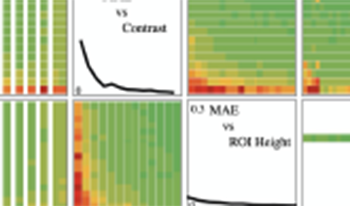
Recent research on digital camera performance evaluation introduced the Natural Scene Spatial Frequency Response (NS-SFR) framework, shown to provide a comparable measure to the ISO12233 edge SFR (e-SFR) but derived outside laboratory conditions. The framework extracts step-edges captured from pictorial natural scenes to evaluate the camera SFR. It is in 2-parts. The first utilizes the ISO12233 slanted-edge algorithm to produce an ‘envelope’ of NS-SFRs. The second estimates the system e-SFR from this NS-SFR data. One drawback of this proposed methodology has been the computation time. The process was not optimized, as it first derived NS-SFRs from all suitable step-edges and then further validated and statistically treated the results to estimate the e-SFR. This paper presents changes to the framework processes, aiming to optimize the computation time so that it is practical for real-world implementation. The developments include an improved framework structure, a pixel-stretching filter alternative, and the capability to utilize Graphics Processing Unit (GPU) acceleration. In addition, the methodology was updated to utilize the latest e-SFR algorithm implementation. The resulting code has been incorporated into a self-executable user interface prototype, available in GitHub. Future goals include making it an open-access, cloud-based solution to be used by scientists, camera evaluation labs and the general public.

The edge-based Spatial Frequency Response (e-SFR) is an established measure for camera system quality performance, traditionally measured under laboratory conditions. With the increasing use of Deep Neural Networks (DNNs) in autonomous vision systems, the input signal quality becomes crucial for optimal operation. This paper proposes a method to estimate the system e-SFR from pictorial natural scene derived SFRs (NSSFRs) as previously presented, laying the foundation for adapting the traditional method to a real-time measure.In this study, the NS-SFR input parameter variations are first investigated to establish suitable ranges that give a stable estimate. Using the NS-SFR framework with the established parameter ranges, the system e-SFR, as per ISO 12233, is estimated. Initial validation of results is obtained from implementing the measuring framework with images from a linear and a non-linear camera system. For the linear system, results closely approximate the ISO 12233 e-SFR measurement. Non-linear system measurements exhibit scene-dependant characteristics expected from edge-based methods. The requirements to implement this method in real-time for autonomous systems are then discussed.